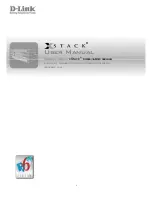
Section 2: General operation
Models 707B and 708B Switching Matrix Reference Manual
2-46
707B-901-01 Rev. A / August 2010
IPv4 addressing
Models 707B and 708B support IPv4 addressing There are three ways of assigning an IP address to
a host: DCHP, DLLA, and static.
DHCP
The Dynamic Host Configuration Protocol (DHCP) protocol is a way for network devices to request
Internet protocol (IP) parameters such as the IP address, gateway, subnet mask, and DNS server
addresses. Each time a network device connects, it leases the IP address for an amount of time set
by the DHCP server. Generally, the time is 24 hours, but it could be shorter or longer depending on
how the DHCP server was configured.
Typically, DHCP IP addressing is used for corporate networks. It is also commonly the default on
home wireless routers that you use to connect your home computer to the internet.
One of the benefits of DHCP is that a system administrator does not have to give you an IP address
each time you want to connect something to the network. However, one of the drawbacks is that you
do not know the IP address that may be assigned to your network device and it can change from
connection to connection. While there are ways to configure DHCP servers to always give the same
network device the same IP address each time, but that means a system administrator needs to be
involved.
Dynamic Link-local Addressing (DLLA)
Also called Auto-IP, DLLA was originally used for ad-hoc networks. DLLA allows all the network
devices to automatically allocate their own unique IP addresses. An Auto-IP address is in the range
169.254.0.0 —169.254.255.255. A network device randomly picks an address in this range and sends
out an ARP packet (on IPv4 only) to see if any other device is using it. If another device responds that
it is using it, the network device generates another address and sees if it is in use and so on.
Static or fixed IP address
Static IP addressing means that the person setting up and configuring the network has assigned a
fixed, unique IP address to each network device. This requires more rigorous enforcement to make
sure everyone has a unique IP address but it has the added benefit that the address will not change.
IPv4 address syntax and subnets
For IPv4, the IP address is 32 bits wide and is divided into two main parts: a network ID number and a
host ID number. The address is expressed as four decimal numbers separated by three periods. Valid
addresses range from 0.0.0.0 to 255.255.255.255, for a total of about 4.3 billion unique addresses.
Each of the four numbers represents the decimal value of the numbers’ 8-bit bytes. The way these
four numbers are assigned for host ID and network ID depends on the class of network being used.
















































